AI Transforms Regulatory Compliance: Streamlining Reporting Processes
Regulatory compliance is an essential aspect of any industry, ensuring that organizations adhere to specific guidelines and regulations set forth by governing bodies. Compliance is particularly crucial in sectors such as finance, healthcare, and technology, where the potential risks and consequences of non-compliance can be significant.
However, regulatory compliance can be a complex and time-consuming process, often involving extensive data collection, analysis, and reporting. In recent years, artificial intelligence (AI) has emerged as a transformative technology that can streamline and optimize these processes.
This blog post will explore the role of AI in regulatory compliance, focusing on how it can automate data collection and analysis, enhance accuracy and efficiency, and identify patterns and potential risks.
The Role of AI in Regulatory Compliance
-
Automating Data Collection and Analysis
One of the most significant challenges in regulatory compliance is the sheer volume of data that organizations need to collect, analyze, and report. Traditionally, this process has been manual, time-consuming, and prone to errors. However, AI systems can automate data collection and analysis, significantly reducing the burden on compliance teams.
AI algorithms can process large amounts of structured and unstructured data from various sources, such as financial statements, customer records, and regulatory filings. By automating data collection and analysis, AI can free up compliance professionals to focus on more strategic and value-added activities. -
Enhancing Accuracy and Efficiency
Manual data collection and analysis are inherently prone to human error. Even with strict quality control measures in place, the risk of mistakes and inconsistencies remains. AI, on the other hand, can analyze data with a high degree of accuracy and consistency, minimizing errors and ensuring compliance with regulatory requirements.
By leveraging AI, organizations can reduce the risk of compliance violations and associated penalties. Additionally, AI can improve the efficiency of compliance processes by eliminating repetitive and time-consuming tasks. This allows compliance teams to work more effectively and allocate their resources to areas that require human judgment and expertise. -
Identifying Patterns and Potential Risks
Regulatory compliance involves not only reporting historical data but also identifying patterns and potential risks. AI can analyze vast amounts of data to identify anomalies and patterns that may indicate potential compliance issues.By detecting these patterns early on, organizations can take proactive measures to address them and avoid potential violations.
Furthermore, AI can continuously monitor regulatory changes and updates, ensuring that organizations remain compliant with the latest requirements. This real-time monitoring capability is particularly valuable in industries where regulations are constantly evolving.
Benefits of AI for Regulatory Compliance
-
Minimizing Human Error
As previously mentioned, human error is a significant risk in regulatory compliance. The manual nature of data collection and analysis leaves room for mistakes, oversights, and inconsistencies. AI systems, on the other hand, can process vast amounts of data with a high degree of accuracy and consistency. By minimizing human error, AI can help organizations avoid compliance violations and associated penalties.
-
Enhancing Transparency and Compliance
AI can enhance transparency in regulatory compliance by providing organizations with a clear view of their data and processes. AI algorithms can analyze data in real-time, identify inconsistencies, and flag potential compliance issues. This level of transparency allows organizations to proactively address compliance gaps and ensure that they are meeting all regulatory requirements. Additionally, AI can generate comprehensive audit trails, providing regulators with the necessary documentation to verify compliance.
-
Streamlining Reporting Processes
Reporting is a critical aspect of regulatory compliance, requiring organizations to submit accurate and timely reports to regulatory authorities. AI can streamline reporting processes by automating data collection, analysis, and report generation.
By leveraging AI, organizations can produce reports more efficiently and ensure that they are meeting all reporting deadlines. This not only saves time and resources but also reduces the risk of non-compliance due to reporting delays or inaccuracies.
Conclusion
The impact of AI on regulatory compliance is undeniable. By automating data collection and analysis, enhancing accuracy and efficiency, and identifying patterns and potential risks, AI has the potential to transform the way organizations approach compliance.
Financial companies, in particular, are leveraging AI to streamline their compliance processes and ensure that they are meeting all regulatory requirements. The future of regulatory compliance is moving towards more streamlined and effective reporting processes, with AI playing a central role in this transformation.
As regulations continue to evolve and become more complex, organizations that embrace AI will gain a competitive advantage by staying ahead of compliance requirements and mitigating risks. With the right AI tools and strategies in place, organizations can navigate the regulatory landscape with confidence and achieve a higher level of compliance.




